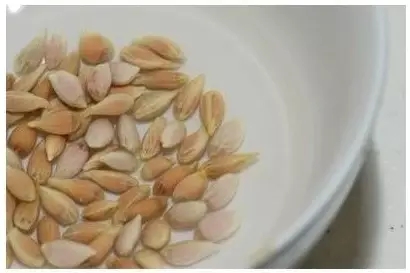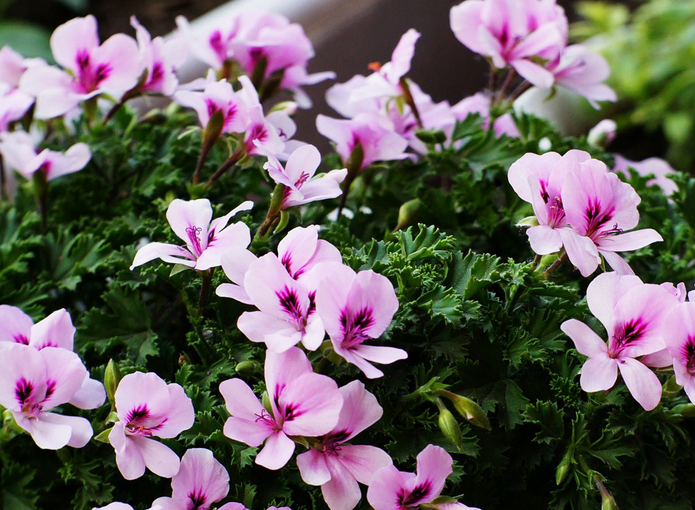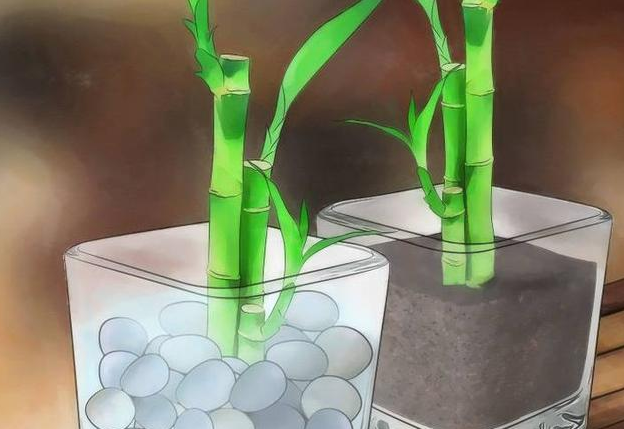Lemon pot planting method what to do if the leaves turn yellow?
Everyone likes lemons, especially lemonade. Lemons have seeds and can be used for potted plants. What is the planting method of lemon potted plants? What if the leaves turn yellow?
Lemon pot planting method:

1. Soak the leftover lemon seeds in water.
two。 Remove the shell from the surface with tweezers.
3. Then find a vessel or cup you like and fill it with wet soil, put all the seeds in place, and put your head up.
4. Then cover it with coarse sand or pebbles. You can also cover it with plastic wrap, spray some water for 2 to 3 days, and sprout in a week or so.
5. It is also 2 to 3 days after germination to spray some water to keep moist to help growth.
6. This is a finished picture. It's beautiful, isn't it? add a touch of green to your desk. If you grow up so tall, if you think he is too thick, you can divide him into several plants and cultivate him somewhere else.
Lemon potted leaf yellow how to do?
1. Iron deficiency
Ferrous sulfate can be added to the sprinkled water, and the concentration is controlled at about 0.3%.
2. Malnutrition
The performance is often that as soon as the flowers bloom, the leaves turn yellow, or even fall. Can be sprayed with potassium dihydrogen phosphate, this fertilizer not only contains nitrogen, phosphorus and potassium, but also contains a large number of trace elements, usage: foliar spray 0.3%, at the same time soil application in the basin, growing season once a month.
3. Root rot
Root rot is often caused by excessive stagnant water in the basin or excessive fertilization. Cut off the rotting roots, and then pay attention to drainage. If there are too many rotten parts, the plant may not be able to save life.
4. Insect pests
Pests are visible to the naked eye, and they can be dewormed manually or sprayed with corresponding chemicals.
So much for the cultivation of lemon potted plants and the treatment of leaf yellow.
Knowledge of Lemon potted cultivation maintenance and Management of Lemon planting
Lemon is a small evergreen tree of the genus Citrus of Rutaceae. Leaf blade small, long oval, leaf margin serrulate. Flowers are solitary, blooming all the year round and full of fragrance. The fruit is oval or ovate and ripens in autumn and winter. The peel is yellow, the pulp is very sour and fragrant, the fruit juice is citric acid, and the peel can extract lemon oil.
Lemon pot cultivation techniques are mainly as follows: large amount of seedling cultivation and upper pot cultivation in the south, suitable for grafting propagation; less cultivation in the north, mainly using cutting methods, and grafting seedlings can also be purchased. The root system of lemon has higher requirements for water, nutrients and soil, and the pot soil should be made into water and air permeability, water and fertilizer conservation, and slightly acidic culture soil. The time of putting on the basin and changing the basin is available after autumn and early spring, and can be flexibly controlled according to the local climate.
Light and temperature: lemon is a light-loving plant, but if the sun is too strong, it will have poor growth and development. Generally, at noon, the annual average temperature for plant replacement is more than 15 ℃, and the optimum growth temperature is 23 ℃ to 29 ℃. If the plant stops growing at more than 35 ℃, it will be damaged by freezing at-2 ℃. Lemons generally do not need to cool down in summer, enter the room before Frosts Descent and leave the room after Qingming Festival, which can survive the winter safely.
Watering and fertilization: lemons need more water in their growth and development, but too much water is not easy to rot their roots. Generally speaking, spring is the time for shoots to spread leaves, pregnant buds to blossom, and appropriate watering. The summer light is strong, the temperature is high, needs more water. However, it should be timely and appropriate, otherwise it will cause fruit drop. Autumn is the period of shoot growth and rapid fruit expansion, so there must be sufficient water. Late autumn and winter are the period of flower bud differentiation, while the basin soil is dry. Lemon prefer fertilizer, in addition to the basin, change the basin to apply sufficient base fertilizer, the growth period should adhere to the principle of thin fertilizer and frequent application. The times and amount of fertilization should be determined according to the growth and phenological period. For example, it is better to apply liquid fertilizer to fully fermented cake fertilizer and water, and the ratio of cake to water is 1VR 200. The soil in the north is slightly alkaline, so ferrous sulfate can be added to the fertilizer solution to form a slightly acidic nutrient solution.
Pruning: pruning is generally divided into winter shears and summer shears. Winter shearing should be based on the principle of "cutting density and keeping thinning, getting rid of weak and strong", cutting off withered branches, cutting weak branches and overgrown branches without the effect of initial space. Summer pruning mainly truncates the overlong branches on the fruitless tree, erases the summer shoots on the fruiting tree, and shortens the declining branches in the middle and upper part of the crown. Lemon for promoting flower and protecting fruit is the tree species that blossom and bear fruit in the four seasons, while the potted plants in the north mostly blossom and bear fruit in spring. Therefore, it is necessary to control the water after the autumn shoot stops growing. Wait for both sides of the leaves to begin to roll, and then moderate watering to promote flower bud differentiation. Pay attention to fertilization in the basin and foliar spraying to cultivate robust fruiting mother branches.
The main measures to protect fruit are: first, to strengthen the supply of fertilizer and water, to accumulate nutrients; second, to carry out artificial pollination; third, to thinning flowers and fruits. Lemon fruit is large and needs more nutrients, with a normal leaf-fruit ratio of 30 to 40:1. According to the principle of removing the weak, staying strong and evenly distributed, first remove too many and too dense buds; then remove part of the fruit when the young fruit is 1cm in size; finally, after the physiological fruit drop, the fruit is determined according to the ratio of leaf to fruit. It can also leave a weak branch and a strong branch with only one fruit.
Will the leaves of potted lemons turn yellow and not bear fruit? You need to pay attention to these nine links.
Many people like to grow a pot of lemon at home, which can not only beautify the environment, but also can be a wonderful thing to pick a lemon bubble and drink lemonade in their spare time. However, potted lemons are not so easy. In the process of planting, you need to pay attention to these nine links:
Picture: lemon fruit
1. Change pots and change soil: potted lemons must be turned over to change soil during the Spring Festival from March to April. If the flowerpot is too small, you can change the appropriate flowerpot, if the flowerpot is still suitable, the original pot can be replaced with new soil, and the bottom fertilizer should be applied when changing the pot.
two。 Spring pruning: spring pruning in combination with changing pots in spring, cutting off inner chamber branches, withered branches and leaves, roots and leaves of diseases and insect pests, only growing branches, in order to facilitate the plant to hang fruit.
3. Rational fertilization: lemon plants should be fertilized many times before flowering and after fruit hanging, multi-element flower fertilizer should be applied once a month, and flower nutrient solution should be sprayed once a month to ensure that the fruit is not easy to fall off and has a bright color.
Photo: potted lemon forest
4. Prevent falling leaves: fallen leaves affect the fruit of lemon, in order to avoid falling leaves, in the daily management work, avoid watering more and less.
5. Noon shade: after the lemon plant blossoms to hang the fruit, when the noon temperature exceeds 30 degrees, it should be shaded for about three hours, otherwise it will affect the normal shape of the flower and hinder the plant from hanging the fruit.
6. Artificial pollination: artificial pollination is an important measure of multi-hanging fruit, pollination is best carried out in time after the petals grow, and this work is carried out around 9 o'clock every morning, the effect is the best.
Photo: potted lemon fruit
7. Prevention and control of diseases and insect pests: summer and autumn is the season of frequent occurrence of diseases and insect pests, which should be controlled. Prevention and control of diseases and insect pests should be more important than control, spraying once every half a month, spraying time is about 9: 00 in the morning, about 4: 00 in the afternoon, the hot sun should not be sprayed at noon to prevent and control drug pests.
8. Focus on fruit protection: according to the plant size, leave several or dozens of disease-free and strong fruits, and the rest of the residual flowers will be picked as soon as possible, so that nutrients can be concentrated to the young fruit.
9. Correct winter: throughout the winter, potted lemons should be placed in an environment of five to ten degrees to overwinter, and the plants should receive sufficient light every day, and the pot soil should be controlled by watering at ordinary times. the basin soil is often in a slightly dry state to avoid root rot and lay a good foundation for the results.
- Prev

The culture method of geranium, the death method, the function and function of essential oil of geranium.
Many people like to cultivate geraniums. The flowers are very gorgeous, and they are in a good mood when they see them. But geraniums are very easy to die in summer. Let's take a look at how geraniums die in summer. The geranium is definitely a charming girl.
- Next

Matters needing attention in hydroponic culture of rich bamboo what kind of container should be used?
Water culture of rich bamboo is the simplest way, it is very convenient, the vitality of rich bamboo is very exuberant, what are the matters needing attention of water culture of rich bamboo? What kind of container should I use? Notes on hydroponic rich bamboo culture: keep it moist and ventilated, but do not accumulate water.
Related
- Fuxing push coffee new agricultural production and marketing class: lack of small-scale processing plants
- Jujube rice field leisure farm deep ploughing Yilan for five years to create a space for organic food and play
- Nongyu Farm-A trial of organic papaya for brave women with advanced technology
- Four points for attention in the prevention and control of diseases and insect pests of edible fungi
- How to add nutrient solution to Edible Fungi
- Is there any good way to control edible fungus mites?
- Open Inoculation Technology of Edible Fungi
- Is there any clever way to use fertilizer for edible fungus in winter?
- What agents are used to kill the pathogens of edible fungi in the mushroom shed?
- Rapid drying of Edible Fungi

